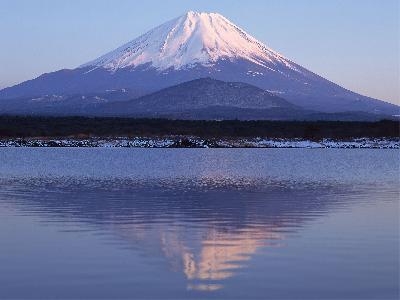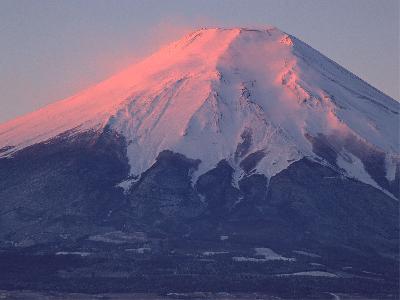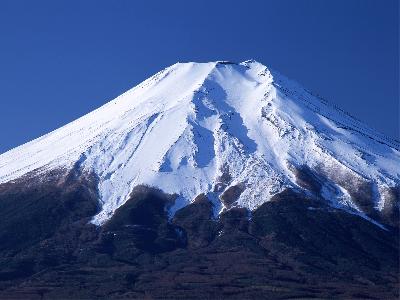|
Mr Fuji extends across parts of both Shizuoka and Yamanashi prefectures. At 3776m, Mt Fuji is the highest mountain in Japan as everyone knows.
The origin of the mountain dates back to hundreds of thousand of years ago. Even today, it is still an active volcano. Its last eruption was on 16th December, 1707, in the Edo period, and there remains a document saying that volcanic ash traveled as far as Tokyo.
Ancient literature describes Mt. Fuji as Mt. 'No Death' or 'No Two' (both of these words can be pronounced as 'fuji' in Japanese). The name 'No Death' derives from the Taketori Tale, in which an elixir of life was burnt on the mountain. 'No Two' comes from the fact that 'no other mountains compete with Mt. Fuji'. Since the Kamakura period, the characters for Mt. Fuji are written as 'samurai gets rich', which samurais preferred.
The number of people climbing Mt. Fuji is said to be the largest of any mountain in the world. The facts about this mountain could go on forever. You will feel its greatness afresh.
The origin of the mountain dates back to hundreds of thousand of years ago. Even today, it is still an active volcano. Its last eruption was on 16th December, 1707, in the Edo period, and there remains a document saying that volcanic ash traveled as far as Tokyo.
Ancient literature describes Mt. Fuji as Mt. 'No Death' or 'No Two' (both of these words can be pronounced as 'fuji' in Japanese). The name 'No Death' derives from the Taketori Tale, in which an elixir of life was burnt on the mountain. 'No Two' comes from the fact that 'no other mountains compete with Mt. Fuji'. Since the Kamakura period, the characters for Mt. Fuji are written as 'samurai gets rich', which samurais preferred.
The number of people climbing Mt. Fuji is said to be the largest of any mountain in the world. The facts about this mountain could go on forever. You will feel its greatness afresh.
| [+ADDRESS] | 
|













